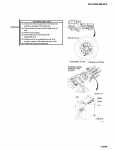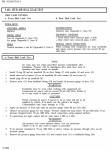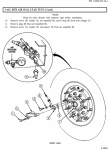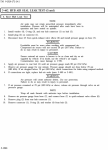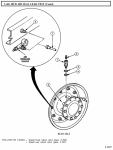All the QRV's, the controller, the sensor, etc.. are VERY similar. The basic idea is trace the line back from the inside of the axle up to wherever it's mounted on the frame rail. The ones on my M936A2 are JIC fittings to the distribution block. Take the line off and plug in your "special" tool. Mine is a gas pressure tester I got from Home Cheapo, a 100psi gauge swapped to it, a tee with a blow off valve to release the pressure and a male JIC fitting. Use shop air and pressure test. This will open the QRV at the wheel and the whole thing will be at tire pressure from your gauge to the tire. When you open the blow off valve fast it will shut the QRV. If you open it slow it will drain the tire down. That's how the system controls the pressure. It has pre-programmed parameters and timers and stuff depending on the truck tire size, pressure target, etc, etc...
If you have the truck off and use shop air (creating a QUIET environment) then all of the sudden it becomes super easy to find a leak. I chased them all over until I did this and as soon as I did I identified 4/6 bad hub seals straight away. You'll wonder why you didn't do this sooner. The follow up part of this is when you get your tool made then get a blank cap for it. Not only will this keep crap out of the tool but if you do get a leak you can cap the line and run one tire short on CTIS (hand manage it) but still operate the rest. That's the shitty thing about the CTIS when you lose one you lose them all (at least on the M939 maybe they fixed that?).
Lots of folks give up on the CTIS. I think it's pretty simple. I use it quite a bit on my wrecker as it weighs 36,xxx pound and going from tarmac to potholes at 80psi isn't going to work unless you want to rattle the truck apart. I also appreciate the periodic checks going down the highway it's peace of mind.
Sorry I don't have exact advice since I don't have the same truck but I hope that helps. If you are computer savvy find the "P2P" simulation program posted in the M939 section it's pretty cool!



